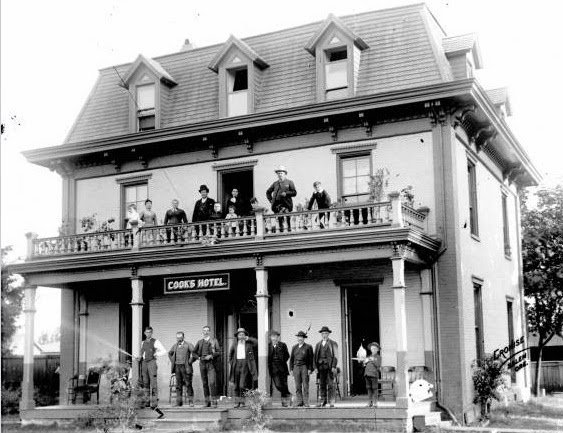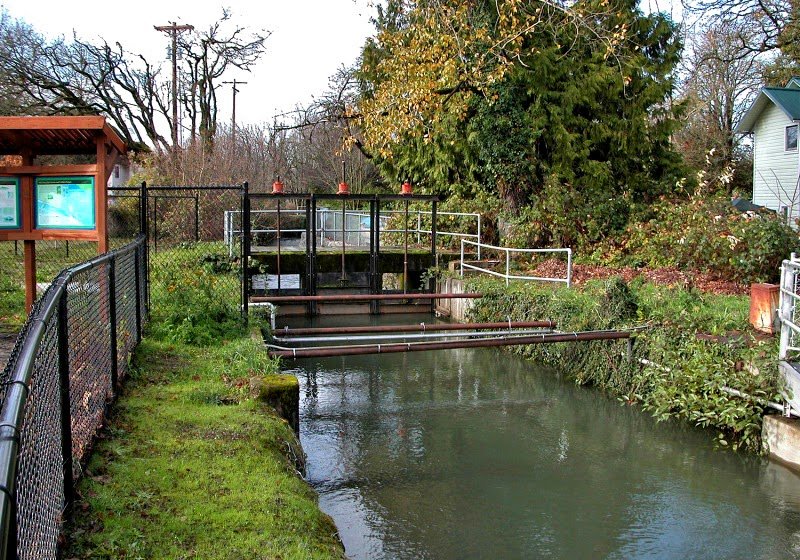- Abraham Lincoln is re-elected as President,
- Grant and Sherman command Union forces against Confederat
e General Lee, with decisive battles in Virginia and Georgia, including Sherman’s burning of Atlanta.(Gone With the Wind, novel by Margaret Mitchell, 1936 and 1939 film.) - A Union soldier is buried in the front lawn of the former home of Mary Ann Custis Lee, Arlington House. Mrs. Robert E. Lee was the great-granddaughter of Martha Washington.
- Montana becomes a territory, Nevada a state, Yosemite Valley is deeded to California for its natural preservation.
- Two actions against native Americans in the West. In January the Navajo “Long Walk” of 300 miles from Arizona to relocation in New Mexico over 18 days when 200 died. In November a Colorado cavalry unit conducted the “Sand Creek Massacre” against Arapaho and Cheyenne, killing up to 163, mostly women and children.
- Gallaudet College, now Gallaudet University, was established in Washington, D. C., the only American university for the deaf.
- Elgin Watch Company is organized, becoming the major U.S. watchmaker until its close in 1968.
In Salem
Despite the continuing hostilities on our nation ~ Civil War battles in our nation’s southern states and brutal policies against Native Americans in the west, Salem is isolated from such tragedies. The city is concentrating on future prosperity by using our Mill Creek as power for commerce. A dam is built this year near present day State and 20th Streets. At this Waller Dam (the land was donated by Reverend A.L. Waller), Mill Creek is split. The millrace ran west to serve the industrial mills of the new city. It now flows along (and under) Ferry Street, to the Thomas Kay Woolen Mill. It continues through the campus of Willamette University
When you visit: the Millrace
The dam we see today was one reconstruc
Other Events
- Salem is reaffirmed as Capital of Oregon after political competition with other Oregon communities including the official records being temporarily removed.
- Salem briefly had telegraphic communication of a sort when, on April 17, 1863, messages from Portland were received here over a line that was built to address demand by a Portland newspaper and the Oregon Statesman newspaper for fresh news about the Civil War. But loss of the ship Noonday off San Francisco with wire aboard delayed the line’s extension from Salem to the Yreka, California, terminal of the transcontinental communication system on the Pacific Coast. Stages delivered dispatches from Yreka to Portland in about six days. But that was not fast enough for the Oregonian newspaper. For a time, that newspaper employed its own pony express riders who got the news through from Yreka to Salem in about 36 hours. From here the telegraph transmitted dispatches to Portland. However, on March 9, 1864, Oregon’s Governor A. C. Gibbs wired President Lincoln in Washington to say that the transcontinental line was completed and open.
- Scandal effected even the families associated with the Willamette missionary community and early Salem. In 1850, there had been James Carter’s suicide, in 1859 Lewis Judson was sued for divorce by Nancy, his second wife, but the most sensational was this year’s charges by Almira Raymond’s charges of cruelty and abuse against her husband W. W. Raymond. These were familiar names and, typically for that time, the women in the cases suffered in the opinion of the communities in which they lived.
- Built by this year is the building that became known as Cook’s Hotel on the southeast corner of High and State Streets. The handsome, three story structure may have first been a residence and had several other names as a hotel. It was razed in 1926 for the construction of new buildings including the Elsinore Theatre.

1880s photograph of Cook’s Hotel
- Another local hotel did not fare well in this year. One person staying in the Marion House hotel reported that the bedbugs “hardly let me go in the mornings.” A fire on January 2, 1864, wiped out the four-story building and the Marion House hotel was no more. It’s reputation for having bugs was so bad that when the grand Marion Hotel was built in 1870, it was named the Chemeketa House to avoid confusion with its buggy predecessor. That 1864 fire changed Salem ‘s firefighting force. Before the Marion House fire, Salem had only the bucket brigade of the “Alerts,” organized December 4, 1857. Afterward, the young city got serious, built a firehouse, and bought a hand-pumper fire engine and hose for Webfoot Engine Co. No. 1, as well as water cisterns.
- Water from Mill Race is pumped to the four cisterns to supply water for volunteer firefighters. These wood-lined water tanks were dug in strategic locations throughout the city. 3-inch lumber lined the 12-foot deep sides of the cisterns and 4-inch lumber covered the 16 x 16 foot opening. When full of water, Salem’s cisterns contained almost 23,000 gallons of water. Cisterns would remain a vital source of water for Salem Fire Department into the 1940’s.

